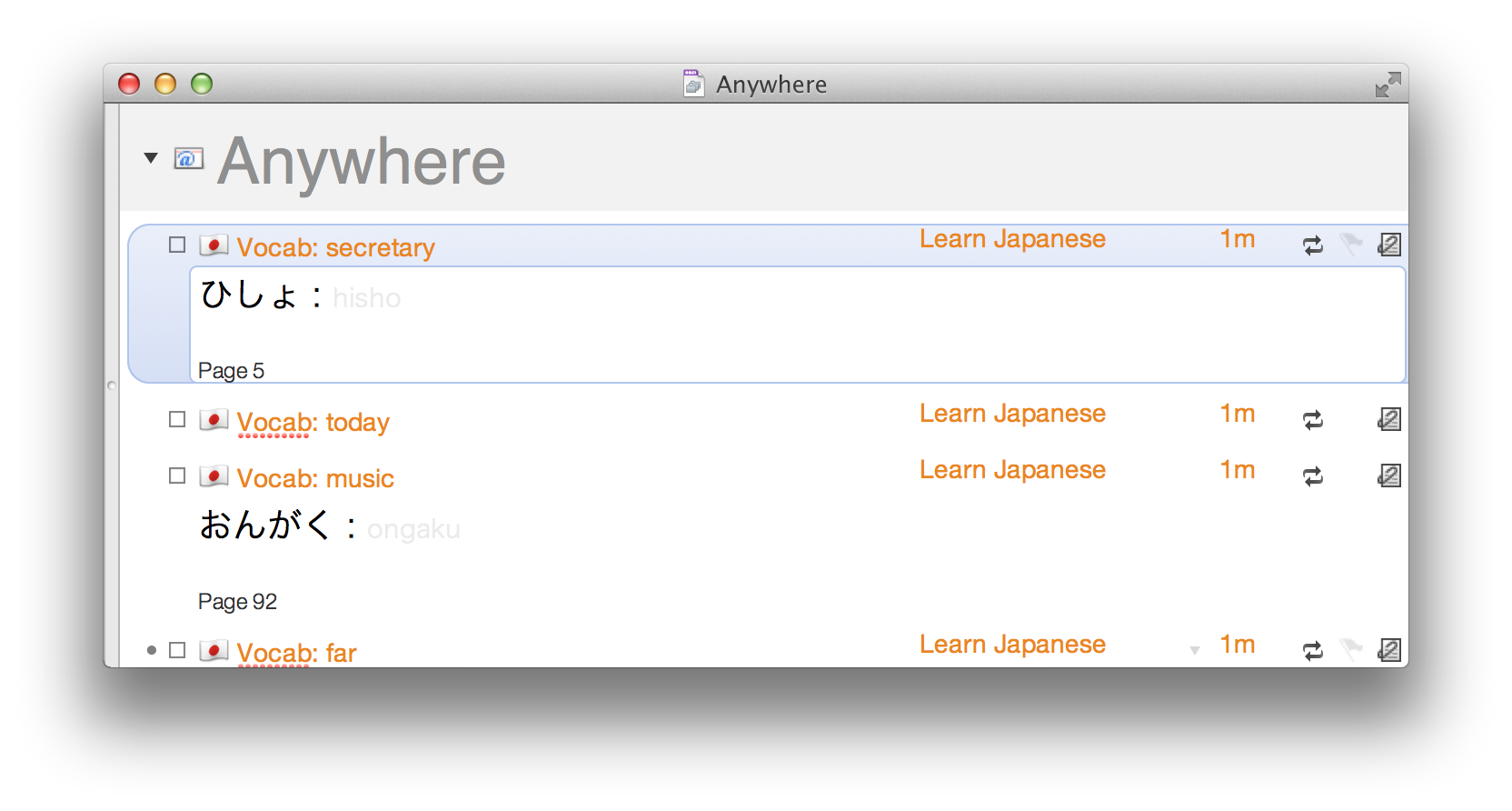At work, I’ve been taking Japanese classes and have been using OmniFocus to help me with daily practice. Here’s a screenshot of a typical morning:
So let me explain the setup. For each word or phrase I want to study, I create a separate task that is set to repeat every two days. In the task name, I have the english word and in the notes I have the word in Japanese with the romaji. When I study, I don’t look at the notes until I want to double-check my answer. If I’m right, I increase the repeat of the task by a day. If’ I’m close, I leave it as is. If I’m wrong, I decrease the repeat by a day. That way, I practice words I’m not learning more frequently and words that I do know naturally move out to show up less frequently.
I’ve been using this system for a couple of years and it’s working pretty well. Currently, I have hundreds of words that in my rotation with anywhere from 30-50 on the list for each day which keeps things manageable. The romaji text is deliberately in a light color so that I focus on the word in Japanese (hiragana or katakana). The only downside is that I’m only focusing on English to Japanese. I need to reverse the many of them to increase my recognition of the Japanese words themselves. Any other ideas for improvements?

